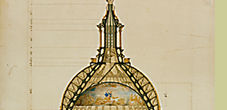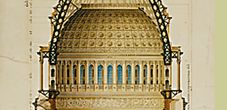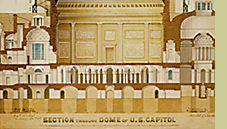
|
Treasures
of Congress January 21, 2000—February 19, 2001 Few institutions have been as central to the course of American history as the U.S. Congress. Most of the great issues in our national life have been played out there, and many of our most memorable political figures have served in the House of Representatives or the Senate. Congress's pivotal position was built into the American system in 1787. The framers of the Constitution described Congress as the “first branch.” This label came about not only because the duties, powers, and responsibilities of Congress are listed in the Constitution before those of the other two branches, but also because the framers believed in legislative supremacy. The Constitution gives Congress the critical powers of raising revenue, regulating commerce, declaring war, coining money, and fleshing out the executive and judicial branches. It is not surprising then, that the significant documents of congressional history are often key documents in American history. These bills, resolutions, petitions, and letters are more than relics of a distant past. They connect us intimately to the great decisions made by our representatives and personalize the lawmaking process in ways no textbook can. In short, the records of Congress document the history of American representative democracy. This exhibition draws upon the holdings of the National Archives and Records Administration's Center for Legislative Archives and presents a sampling of the landmark documents created by, or delivered to, Congress. Records of Congress displayed in this exhibition are courtesy of the U.S. House of Representatives and the U.S. Senate |








